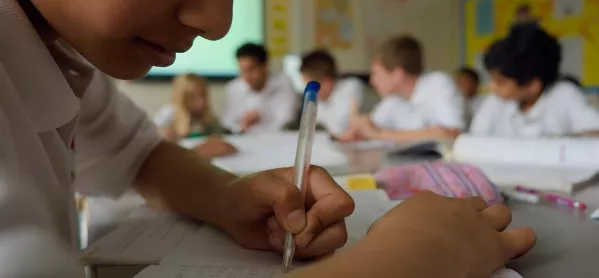Official statistics published today showing how schools and pupils have performed at key stage 4, reveal that the gap between disadvantaged pupils and others widened slightly last year on a number of measures.
The average Attainment 8 score in 2018, based on pupils’ results in eight subjects, was 36.7 on average for disadvantaged pupils, compared to an average 50.1 for all other pupils - a gap of 13.4.
In 2017 disadvantaged pupils had an average Attainment 8 score of 37 and other pupils had an Attainment 8 score of 49.8 - a gap of 12.8.
Looking at the proportion of pupils gaining at least grade 5 in English and maths, 24.9 per cent of disadvantaged pupils did so in 2018, compared to 50.1 per cent of others - a gap of 25.2 percentage points.
In 2017, the gap was 25 percentage points with 24.5 per cent of disadvantaged pupils meeting this measure compared to 49.4 per cent overall.
The statistics also revealed:
1. EBacc entry has increased slightly
In 2018, 38.4 per cent of pupils in state-funded schools entered the EBacc compared to 38.2 per cent in 2017.
2. But EBacc achievement has dropped
The percentage of pupils in state-funded schools achieving an EBacc at grades 9-5 dropped from 21.3 per cent in 2017 to 16.7 per cent in 2018.
The statistical release states this could be due to the introduction of more reformed GCSEs in 2018.
3. The proportion of pupils achieving a strong pass in English and maths GCSE has increased.
In 2018, 40.2 per cent of pupils in all schools achieved a grade 5 in English and maths compared to 39.6 per cent in 2017.
4. The percentage of pupils entering at least one arts subject has dropped
In 2018, 44.3 per cent of pupils entered at least one arts subject at key stage 4 - compared to 46.5 per cent in 2017. It is the third consecutive year that there has been a fall in entries.
5. White pupils were the only ethnic group whose EBacc entry rate decreased
The statistics show that EBacc entry rates for mixed, black, Asian and Chinese pupils increased between 2017 and 2018, with Chinese pupils remaining the most likely to enter the EBacc - up from 61.8 per cent in 2017 to 63.6 per cent in 2018.
The entry rate for white pupils, the group least likely to enter the EBacc, dropped from 36.4 per cent in 2017 to 36 per cent in 2018.
6. Schools in the North East are most likely to fall below the floor standard
There were 346 secondary schools below the 2018 floor standard. In London, 5.1 per cent of schools were below the floor. In the North East, 23.2 per cent of schools were below the floor.




